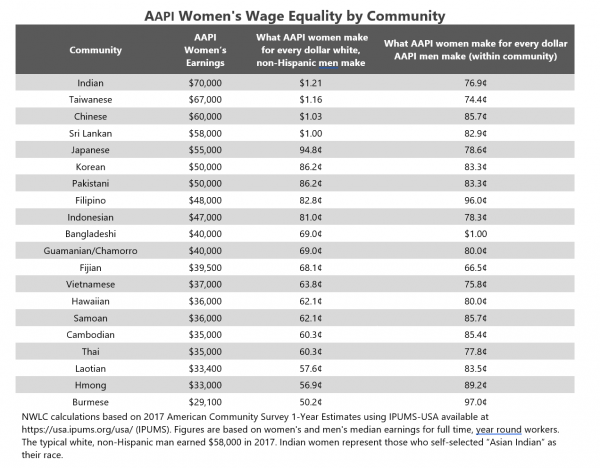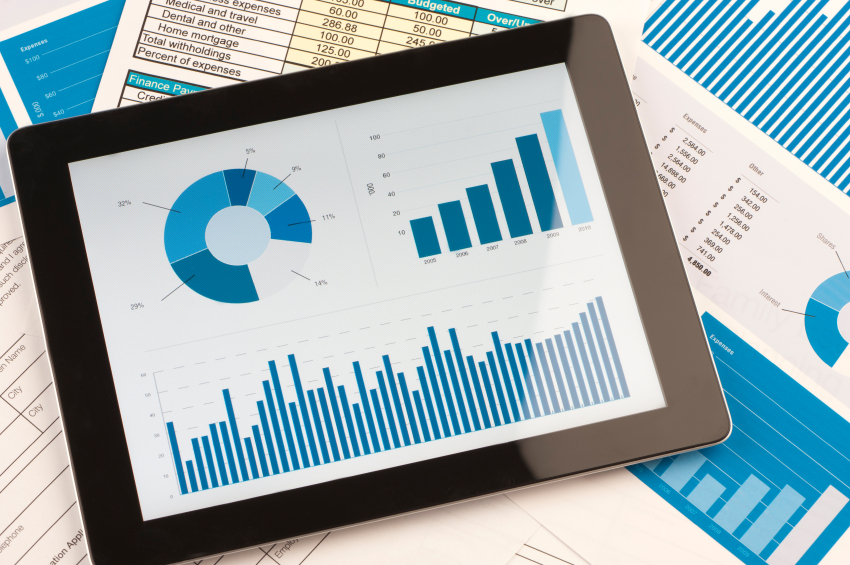Abortion rights, women of color, and LGBTQIA+ people are under attack. Pledge to join us in fighting for gender justice.
It’s Not Really AAPI Equal Pay Day. Here’s Why.

 Today marks Asian American and Pacific Islander (AAPI) Women’s Equal Pay Day, which represents how many extra months the typical AAPI woman in the U.S. has to work to make what her white, non-Hispanic men colleagues did last year alone. In 2017, self-identified Asian women working full time, year-round missed out on $9,010 annually and made only 85 cents for every dollar paid to white, non-Hispanic men.
Today marks Asian American and Pacific Islander (AAPI) Women’s Equal Pay Day, which represents how many extra months the typical AAPI woman in the U.S. has to work to make what her white, non-Hispanic men colleagues did last year alone. In 2017, self-identified Asian women working full time, year-round missed out on $9,010 annually and made only 85 cents for every dollar paid to white, non-Hispanic men.
The AAPI community is stereotyped as a monolith; however, it is one of wide-ranging diversity – spanning dozens of racial and ethnic communities and over 100 languages and vastly different immigration narratives, which informs economic security. It is only when we disaggregate the data, that it becomes clear that some AAPI women experience even larger gaps in pay when compared to their white, non-Hispanic male peers. For instance, Burmese, Hmong, and Laotian women make around $25,000 less than white, non-Hispanic men each year. And while these communities of AAPI women struggle with the largest wage gaps, other AAPI women, such as Indian and Taiwanese women, earn more than white, non-Hispanic men but less than their AAPI male counterparts. Take a look at this table which highlights important differences in wage equality among AAPI communities of women:

On days like today, it’s important to remember just how detrimental the wage gap can be towards AAPI women’s economic security – especially for certain communities of AAPI women. So, researchers like me need to look closely at the data and account for the vast economic diversity that exists among AAPI women.
However, it’s often not as simple as crunching numbers into a calculator. Data collection on AAPI communities is sorely lacking, which should come as no surprise since federal agencies are not obligated to collect detailed data on AAPI individuals. This means that sample sizes are frequently too small for researchers to make valid and reliable estimates on AAPI communities. And if researchers can’t make estimates at the community level, then we can’t fully understand what policies will help all AAPI women achieve economic security. Furthermore, when there is a lack of robust data collection, it breeds dangerous generalizations that silence and erase the lived realities of those living at the margins – like how the Model Minority Myth asserts that all Asians (specifically those who look to be East Asian) are affluent and comfortable in the status quo.
We first need to increase data and research on AAPI communities if we want to achieve pay equity for all women. A good first step would be to make sure that federal agencies standardize data collection and reporting of AAPI communities. If you’re interested in getting involved or learning more about how data disaggregation can help promote equity for AAPI women, check out these resources:




